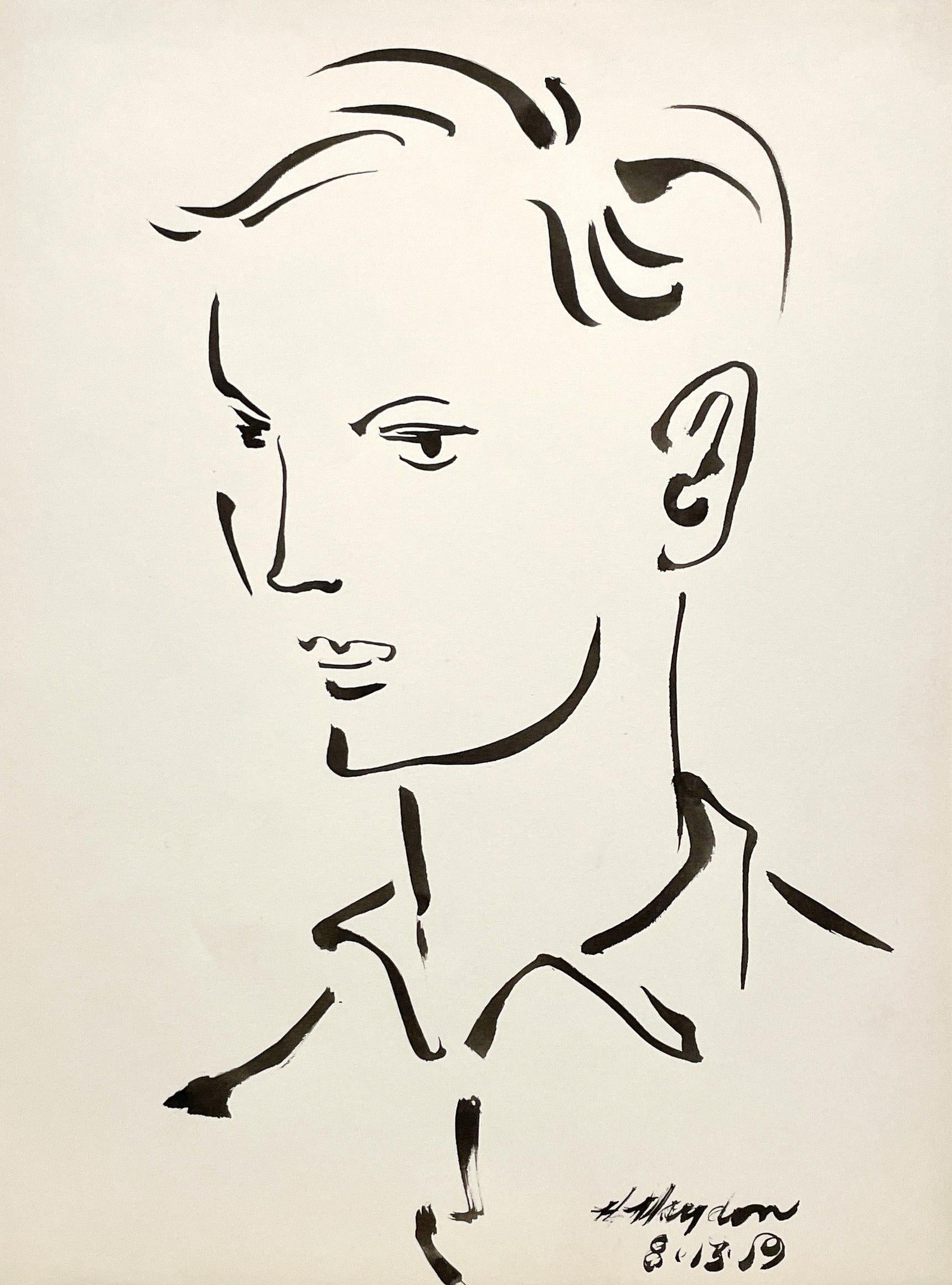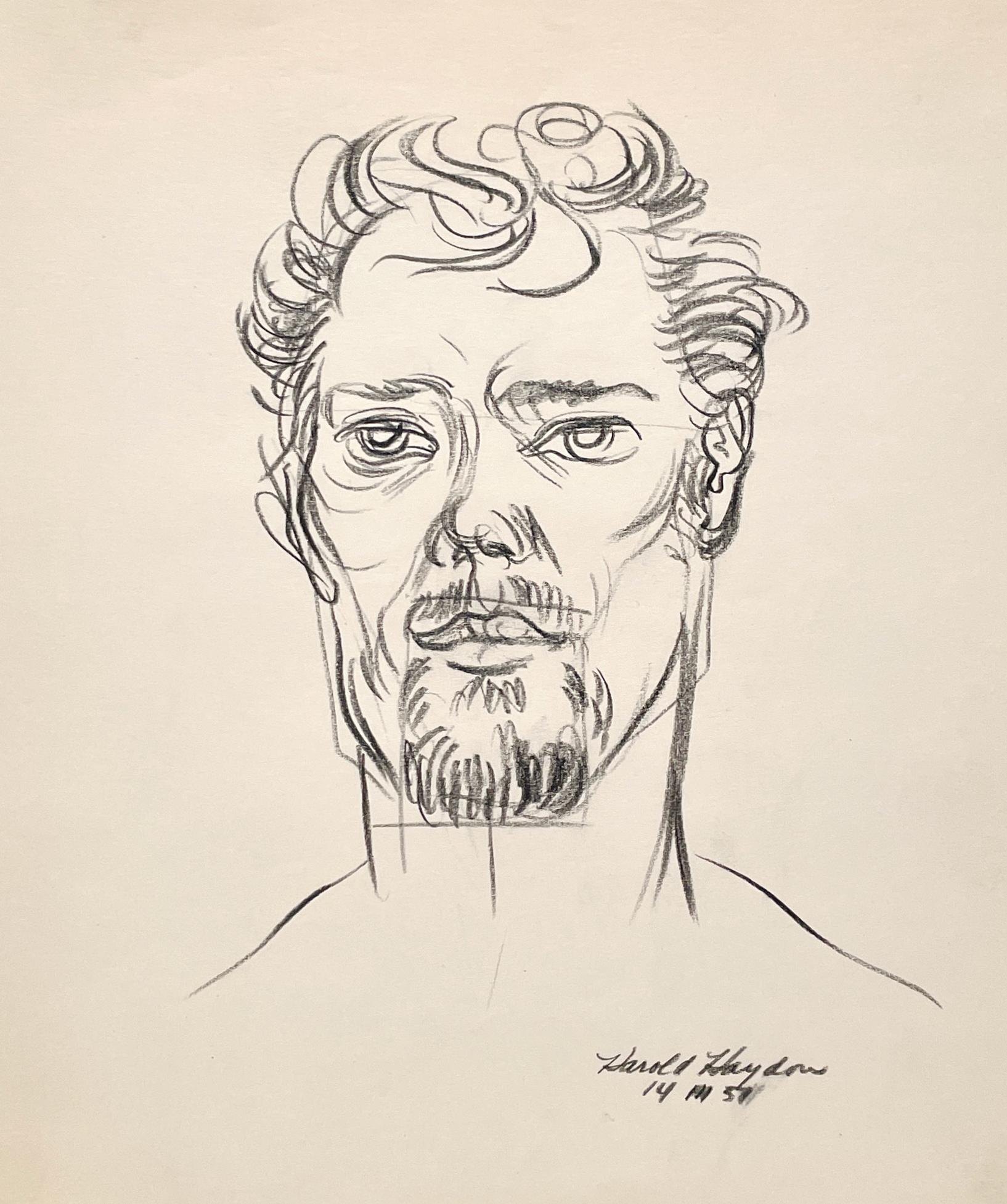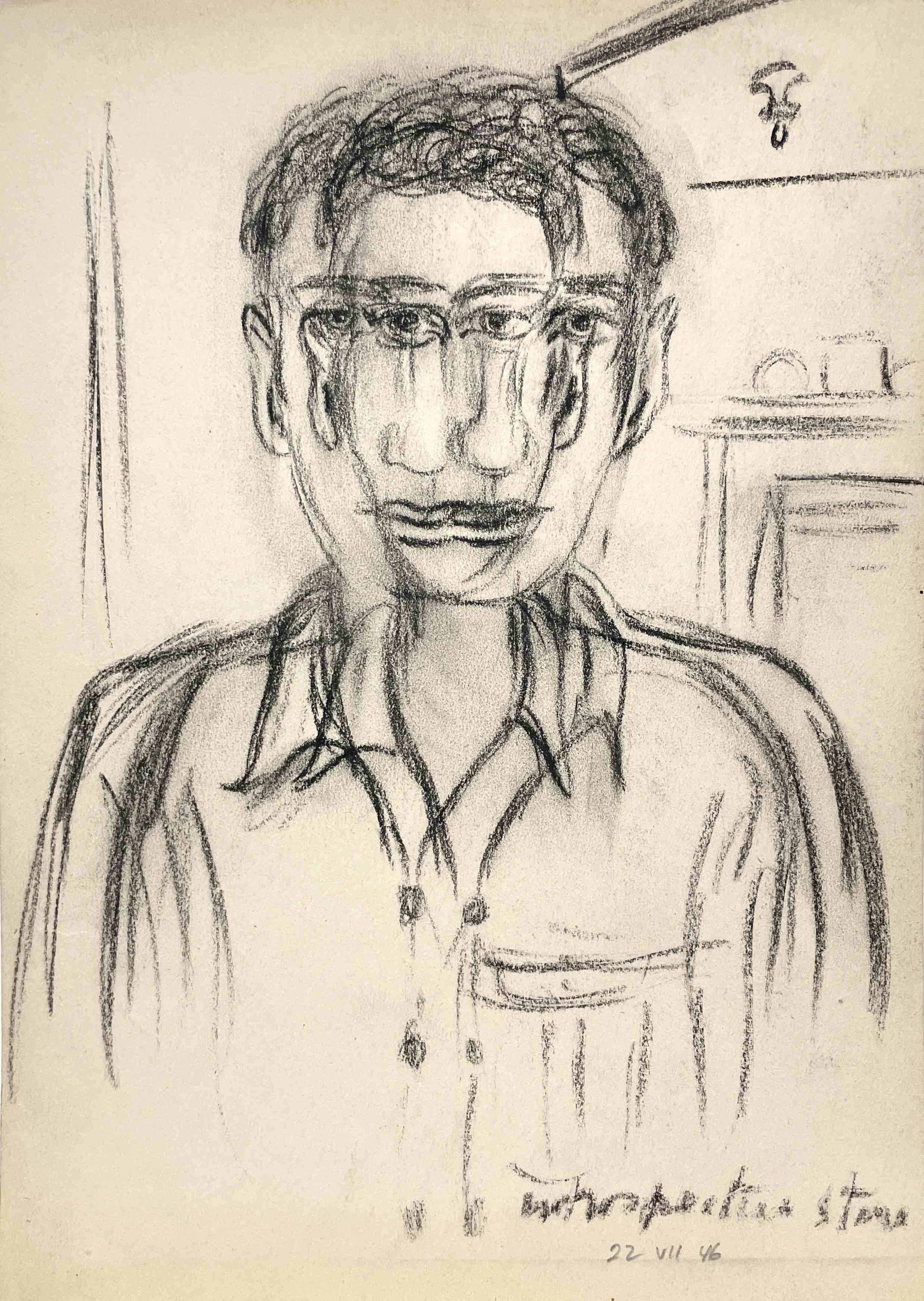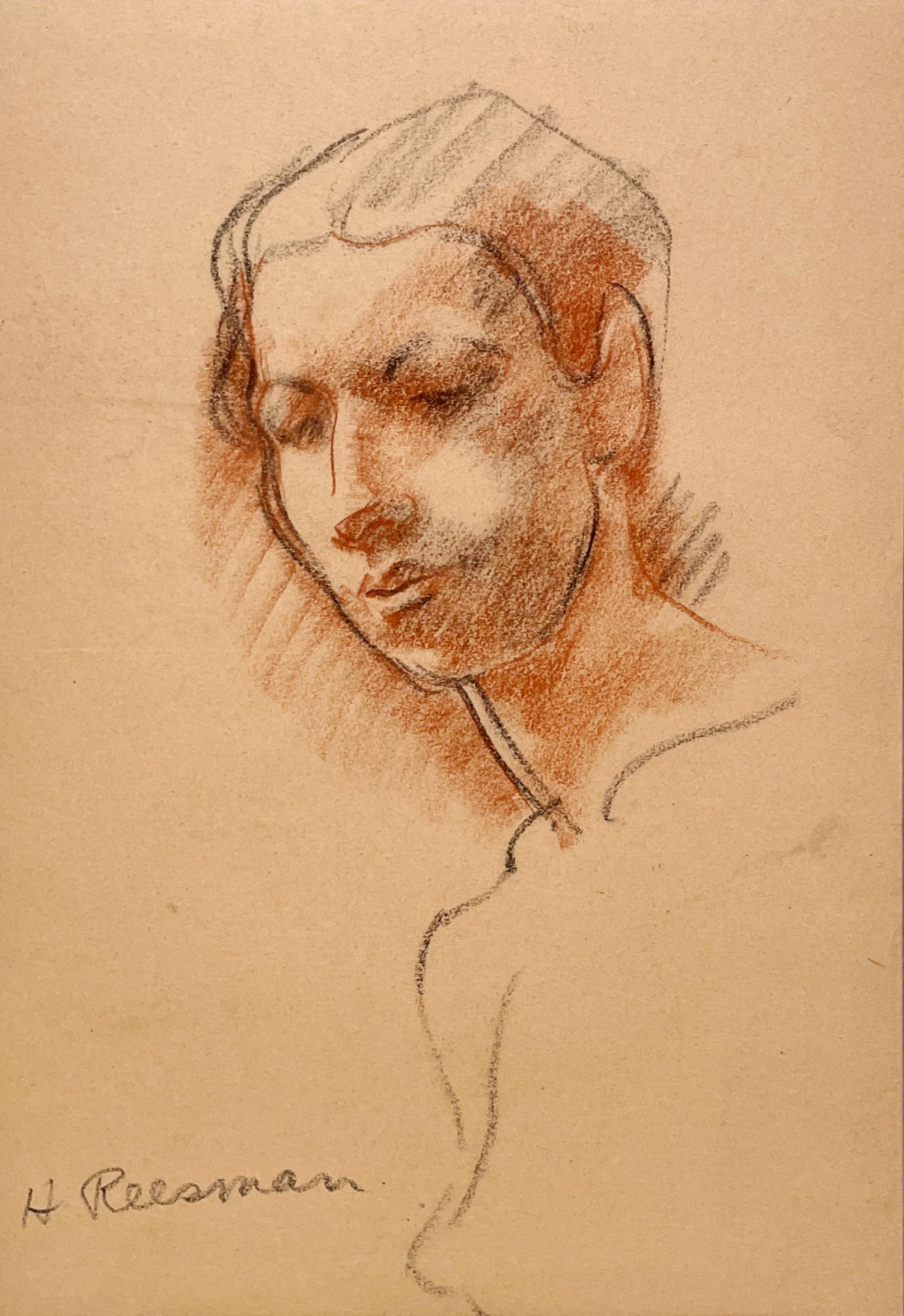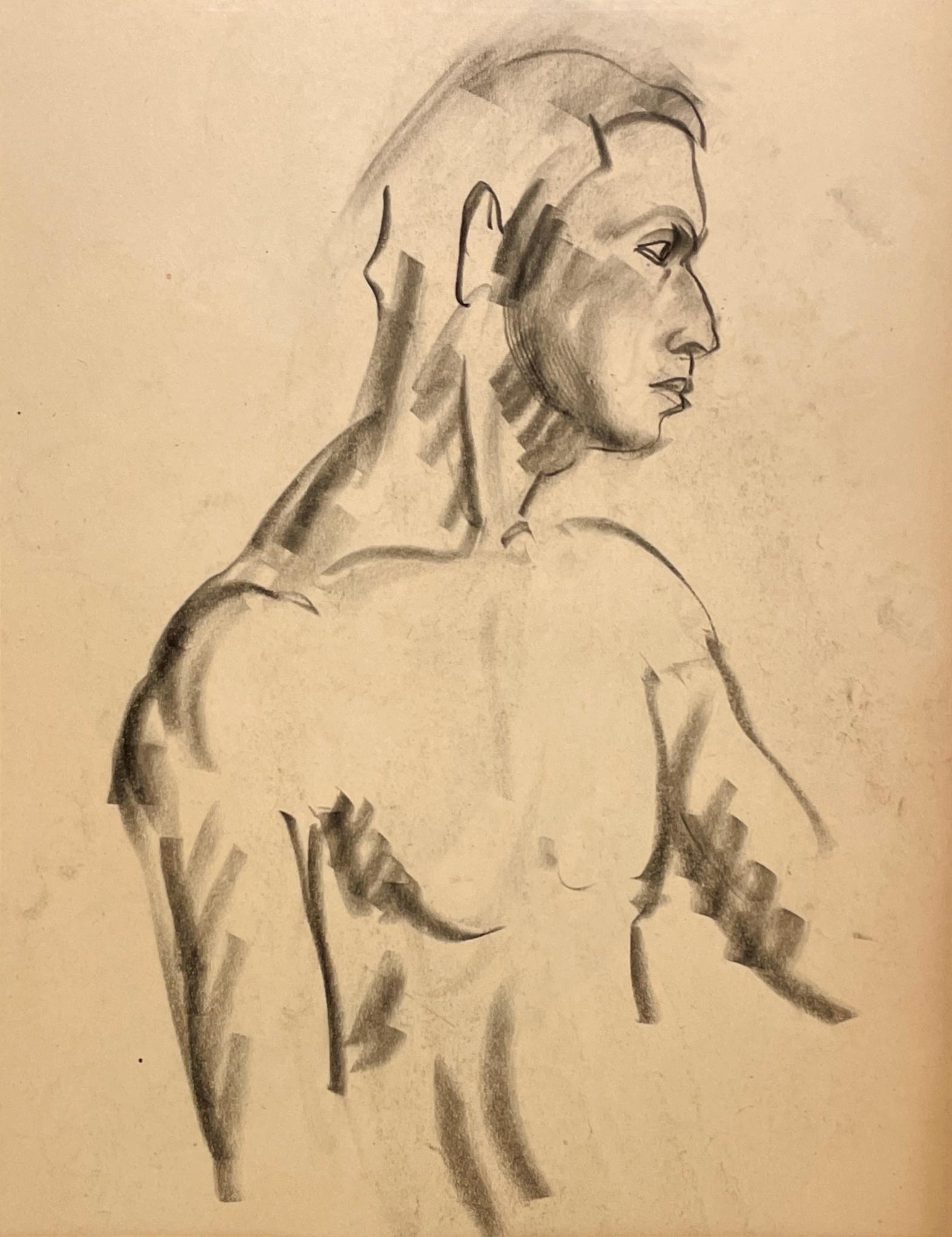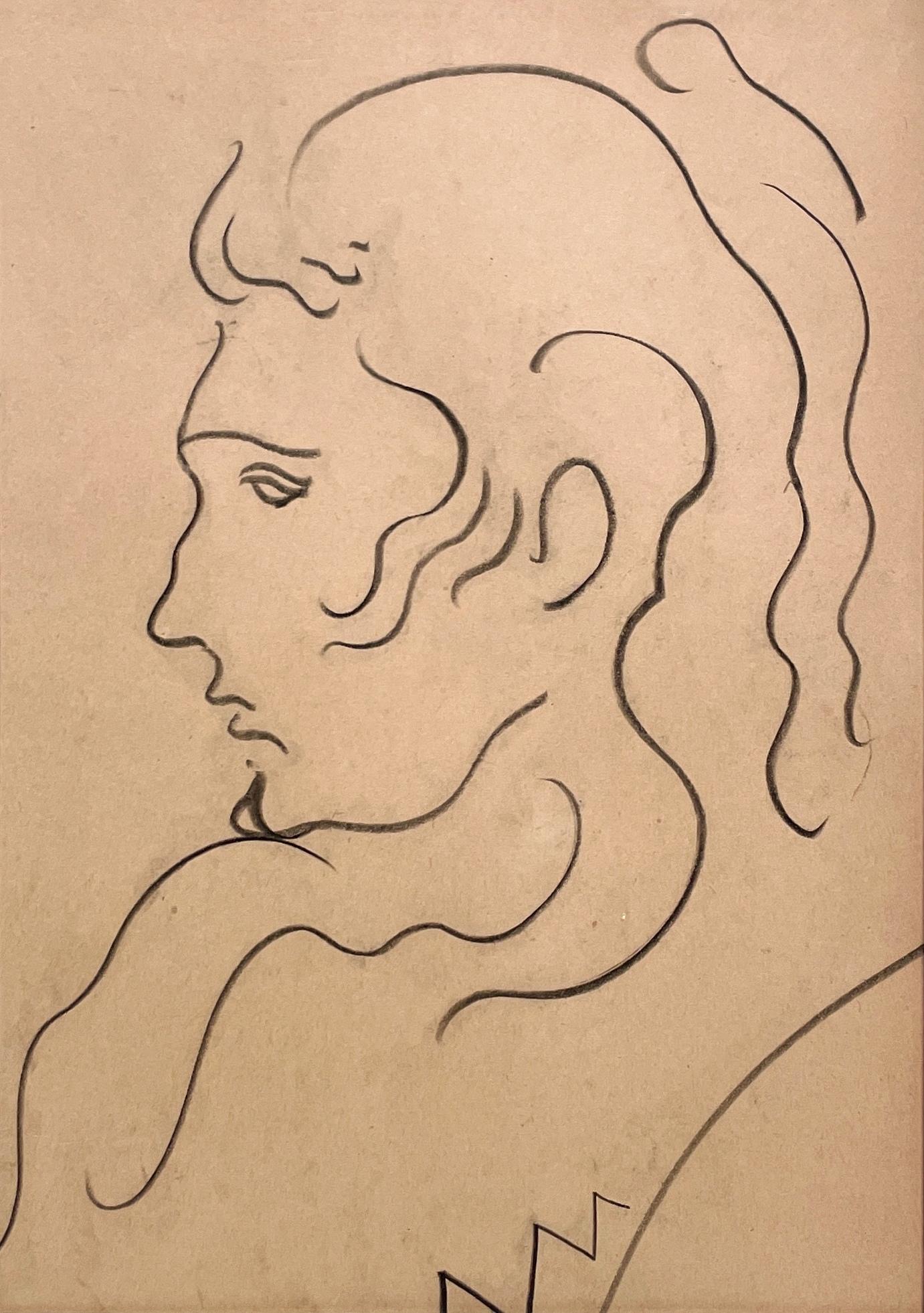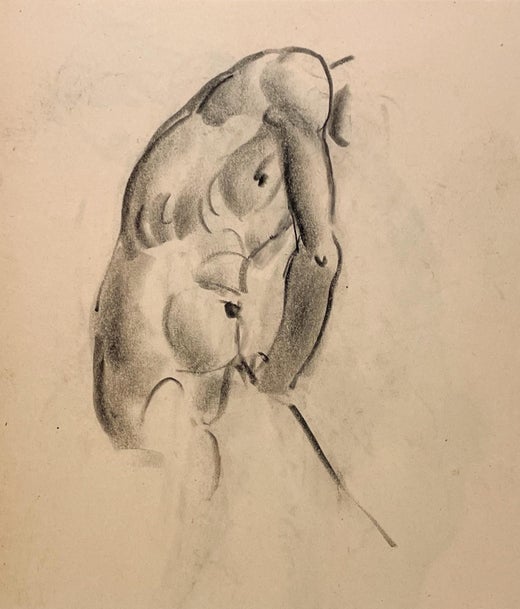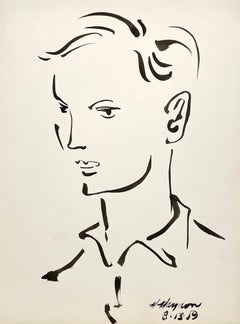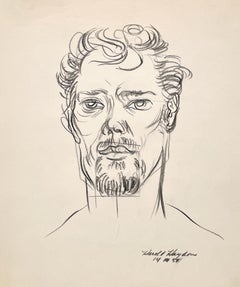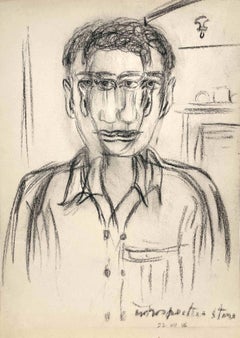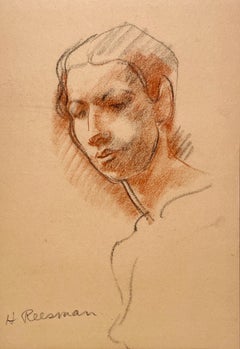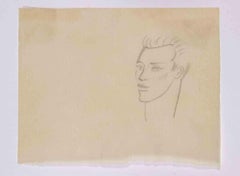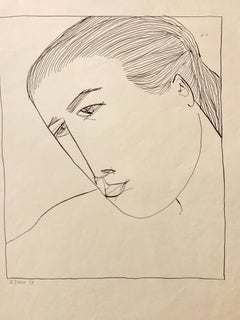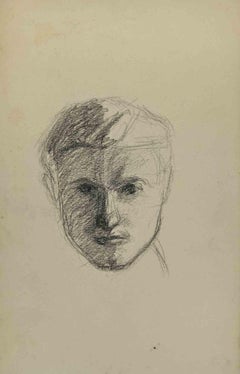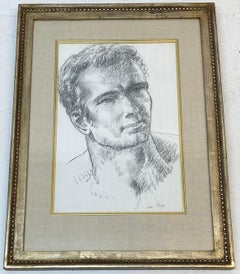Items Similar to A Sensitive 1950s Mid-Century Modern Portrait of a Young Man By Harold Haydon
Want more images or videos?
Request additional images or videos from the seller
1 of 11
Harold HaydonA Sensitive 1950s Mid-Century Modern Portrait of a Young Man By Harold Haydon1951
1951
$385
£296.17
€343.77
CA$542.94
A$608.19
CHF 319.44
MX$7,395.35
NOK 4,045.17
SEK 3,839.96
DKK 2,565.66
About the Item
A Sensitive, Finely Rendered 1950s Mid-Century Modern Portrait of a Young Man By Noted Chicago Artist, Harold Haydon (Am. 1909-1994). Artwork size: 12 x 9 1/2 inches. Artwork is unframed; matted / floated to an archival mat board measuring 16 x 12 inches (ready to frame). Signed and dated "Harold Haydon 24-II-51" lower right. Estate stamped on reverse. Provenance: Estate of the artist.
Harold Emerson Haydon was born in 1909 in Fort William, Ontario, Canada. He moved to Chicago with his family in 1917 and became a naturalized U.S. citizen in 1941. Haydon attended the University of Chicago Lab School and the University of Chicago, where he earned a Bachelor’s Degree and Master’s Degree in Philosophy. He also studied at the Art Institute of Chicago in the early 1930s. Haydon became a Professor of Art at the University of Chicago from 1944-1975 and later taught as an instructor at the School of the Art Institute of Chicago from 1975-1981. From 1975-1982, Haydon also taught as an Adjunct Professor of Fine Arts at Indiana University. He is recognized for his vibrant, painterly landscapes of New England, Vermont and Canada, as well as his dynamic urban views of the city of Chicago and its picturesque lakefront.
Harold Haydon served as the longtime, respected art critic of the Chicago Sun-Times newspaper from 1963-1985. He died in Chicago in 1994.
- Creator:Harold Haydon (1909 - 1994, American)
- Creation Year:1951
- Dimensions:Height: 16 in (40.64 cm)Width: 12 in (30.48 cm)Depth: 0.13 in (3.31 mm)
- Medium:
- Movement & Style:
- Period:
- Condition:Very good original estate condition. See photos.
- Gallery Location:Chicago, IL
- Reference Number:Seller: #221921stDibs: LU2591216324692
Harold Haydon
Harold Emerson Haydon was born in Fort William, Ontario, Canada in 1909. Haydon came to Chicago with his family in 1917 and became a naturalized American citizen in 1941. He attended the University of Chicago Lab School and the University of Chicago, where he earned a Bachelor’s Degree and Master’s Degree in Philosophy. He also studied painting at the Art Institute of Chicago. Haydon was a long-time Professor of Art at the University of Chicago, teaching from 1944-1975. He became an instructor at the Art Institute of Chicago from 1975-1981. Haydon also taught as an Adjunct Professor of Fine Arts at Indiana University from 1975-1982. In addition, Haydon served as the noted art critic of the Chicago Sun-Times from 1963-1985. He died in Chicago in 1994.
About the Seller
5.0
Recognized Seller
These prestigious sellers are industry leaders and represent the highest echelon for item quality and design.
Established in 2000
1stDibs seller since 2023
71 sales on 1stDibs
Typical response time: 3 hours
- ShippingRetrieving quote...Shipping from: Chicago, IL
- Return Policy
Authenticity Guarantee
In the unlikely event there’s an issue with an item’s authenticity, contact us within 1 year for a full refund. DetailsMoney-Back Guarantee
If your item is not as described, is damaged in transit, or does not arrive, contact us within 7 days for a full refund. Details24-Hour Cancellation
You have a 24-hour grace period in which to reconsider your purchase, with no questions asked.Vetted Professional Sellers
Our world-class sellers must adhere to strict standards for service and quality, maintaining the integrity of our listings.Price-Match Guarantee
If you find that a seller listed the same item for a lower price elsewhere, we’ll match it.Trusted Global Delivery
Our best-in-class carrier network provides specialized shipping options worldwide, including custom delivery.More From This Seller
View AllMid-Century, Black & White Portrait of a Young Man by Artist Harold Haydon
By Harold Haydon
Located in Chicago, IL
A 1959, black & white, ink on paper portrait of a young man by artist Harold Haydon. Artwork size:
12" x 8 3/4". Archivally matted to: 12" x 16". Provenance: Estate of the Ar...
Category
1950s American Modern Figurative Drawings and Watercolors
Materials
Paper, Ink
A Compelling 1951 Mid-Century Modern Portrait of a Young Man by Harold Haydon
By Harold Haydon
Located in Chicago, IL
A Compelling, 1951 Mid-Century Modern Portrait of a Young Man by Noted Chicago Artist, Harold Haydon (Am. 1909-1994). Artwork size: 12 x 9 1/2 inches. Artwork is unframed, matted/...
Category
Mid-19th Century American Modern Figurative Drawings and Watercolors
Materials
Paper, Charcoal
A Fabulous, Surrealist 1946 Mid-Century Modern Abstract Portrait of a Young Man
By Harold Haydon
Located in Chicago, IL
A Fabulous, Surrealist 1946 Mid-Century Modern Abstract Portrait of a Young Man by Noted Chicago Artist, Harold Haydon (Am. 1909-1994). Titled "Introspective Stare", the drawing is ...
Category
Mid-20th Century Surrealist Portrait Drawings and Watercolors
Materials
Paper, Charcoal
A Fine 1946 Modern Portrait Figure Study of a Handsome Young Male Model / Artist
By Harold Haydon
Located in Chicago, IL
A Fine 1940s, Mid-Century Modern Academic Portrait Figure Study of a Handsome Young Male Model by Notable Chicago Artist, Harold Haydon (Am. 1909-1994). An exceptionally well execut...
Category
1930s American Modern Portrait Drawings and Watercolors
Materials
Paper, Charcoal, Pastel
A Handsome 1930s Modern Portrait Figure Study of a Young Male Model
By Harold Haydon
Located in Chicago, IL
A Very Finely Drawn 1930s Modern Portrait Figure Study of a Young Male Model by Notable Chicago Modern Artist, Harold Haydon (Am. 1909-1994). An early charcoal drawing by Haydon sh...
Category
1930s American Modern Figurative Drawings and Watercolors
Materials
Paper, Charcoal
A Vintage Mid-Century Modern Portrait of a Young Man with Long Hair, Beatnik Era
By Harold Haydon
Located in Chicago, IL
A Vintage, Mid-Century Modern, Beatnik-era portrait study of a young male model with long hair by notable Chicago artist, Harold Haydon. The drawing is charcoal on paper dating circ...
Category
Mid-20th Century American Modern Figurative Drawings and Watercolors
Materials
Paper, Charcoal
You May Also Like
Portrait of a Young Man - Drawing by Valentine Hugo - Mid 20th century
By Valentine Hugo
Located in Roma, IT
Portrait of a Young Man is a Pencil Drawing realized by Valentine Hugo (1890-1968).
Good condition on a yellowed paper included a white cardboard passp...
Category
Mid-20th Century Modern Portrait Drawings and Watercolors
Materials
Pencil
1950s "Upclose Portrait" Mid Century Ink Portrait Drawing Pratt
By Donald Stacy
Located in Arp, TX
Donald Stacy (1925-2008) New Jersey
"Upclose Portrait"
1953
Ink on paper
14" x 16.5" unframed
Signed and dated in pencil lower right
Came from artist estate
*Custom framing available...
Category
Mid-20th Century American Modern Figurative Drawings and Watercolors
Materials
Paper, Ink
Portrait - Drawing by Joseph Alexander Colin - Mid-20th Century
Located in Roma, IT
Portrait is a drawing realized by Joseph Colin in the Mid-20th Century.
Pencil on ivory-colored paper
Good conditions with slight foxing.
The artwork is realized through deft expr...
Category
Mid-20th Century Modern Figurative Drawings and Watercolors
Materials
Pencil, Paper
Leon Kroll Original Graphite Portrait of a Young Man c.1940
By Leon Kroll
Located in San Francisco, CA
eon Kroll Original Graphite Portrait of a Young Man c.1940
Outstanding portrait by listed American artist Leon Kroll
Graphite on paper
Dimensions 12" wide x 18" high
The vintage ...
Category
Early 20th Century Portrait Drawings and Watercolors
Materials
Graphite
Portrait of Man - Original Charcoal Drawing by Flor David - 1950s
By Flor David
Located in Roma, IT
Man is an original pencil drawing on ivory paper realized by Flor David in the 1950s.
This is an original drawing representing the profile of a Man. The artwork is depicted through ...
Category
1950s Figurative Drawings and Watercolors
Materials
Charcoal
Sketch for a Portrait - Drawing by Flor David - Mid 20th Century
By Flor David
Located in Roma, IT
Sketch for a Portrait is a drawing on paper realized in the Mid-20th Century by Flor David.
Good conditions.
Flor David (1891-1958) ): pseudonym of David Florence. Pastel painter...
Category
Mid-20th Century Modern Figurative Drawings and Watercolors
Materials
Pencil
More Ways To Browse
Mid Century Painting Of A Man
Portrait Of Young Man
Dior Newspaper
American Portrait Early 20th Century
Harolds Vintage
Paris Fine Arts
Warm Painting
Green Abstract Art
Vintage Mid Century Prints
Contemporary Japanese Art
Mid Century Vintage Painting Frames
Exhibition Photos
Body Sculpture
French Still Life
Reflections Painting
Writer Art
Layered Paper Art
California Prints
